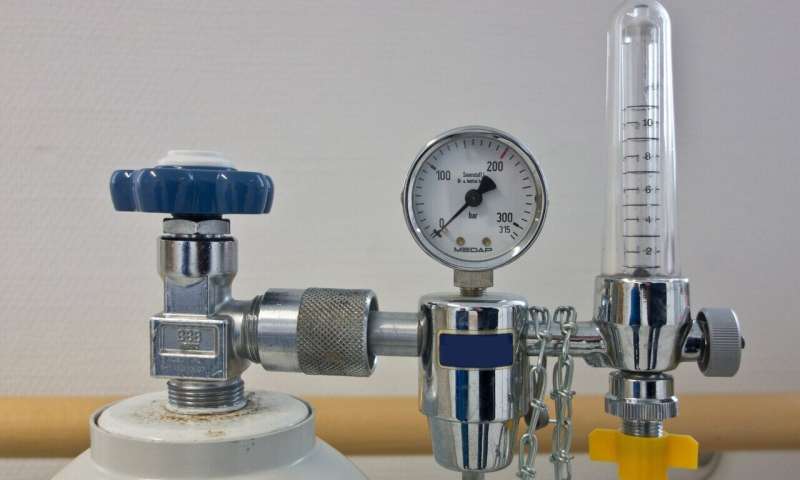Credit: CC0 Public Domain
A liberal oxygen strategy has the same impact on 30-day mortality as a conservative protocol in patients with acute coronary syndrome, according to late breaking results from the NZOTACS trial presented in a Hot Line Session today at ESC Congress 2019 together with the World Congress of Cardiology.
The liberal oxygen strategy seemed beneficial in the subgroup of patients with ST-segment elevation myocardial infarction (STEMI). "This finding if correct would be important, but its significance may be argued because this analysis was not the primary outcome for the study," said principal investigator Professor Ralph Stewart of Green Lane Cardiovascular Service, Auckland City Hospital, New Zealand.
The role of oxygen in patients with acute coronary syndrome has been uncertain. ESC guidelines recommend oxygen in patients with STEMI and non-ST-segment elevation myocardial infarction (NSTEMI) when blood oxygen saturation is below 90 percent, but not routinely above this level. (2,3)
Prof Stewart said: "Oxygen is widely available, easy to administer and usually well tolerated, but it is not known whether it is beneficial or harmful. Previous trials were too small to exclude modest benefit or harm from oxygen on mortality, which if known would make a difference to whether and when it was used. The possibility of harm in non-hypoxemic patients was raised by a 2018 meta-analysis."
The aim of the New Zealand Oxygen Therapy in Acute Coronary Syndromes (NZOTACS) trial was to identify or exclude modest favorable or adverse effects of oxygen in non-hypoxemic or mildly hypoxemic patients with a suspected or confirmed acute coronary syndrome.
The cluster randomized crossover trial compared two oxygen protocols as part of routine care in 40,872 patients presenting with a suspected or confirmed acute coronary syndrome in ambulances and hospitals over two years in New Zealand.
The high oxygen protocol recommended high flow oxygen for ischemic symptoms or electrocardiographic changes, irrespective of the blood oxygen saturation (Sp02) level. The low oxygen protocol recommended oxygen only if Sp02 was below 90 percent, with a target of reaching a maximum Sp02 of 94 percent.
Four geographic regions including 24 hospitals used both oxygen protocols for 12 months each in randomly allocated sequences. The primary endpoint was 30-day mortality obtained from a national database.
For all patients, 30-day mortality was the same with the high and low oxygen protocols (3.1 percent versus 3.0 percent). Prof Stewart said: "This suggests that oxygen is neither beneficial nor harmful, and it is safe to give oxygen to patients presenting with a suspected or confirmed acute coronary syndrome."
For patients with STEMI, 30-day mortality was significantly decreased with the high compared to the low oxygen protocol (8.8 percent versus 10.6 percent). Prof Stewart said: "Oxygen may benefit patients presenting with STEMI, who have the most severe myocardial ischemia and the highest mortality, but more evidence is needed to be sure."
More information: Borja Ibanez et al. 2017 ESC Guidelines for the management of acute myocardial infarction in patients presenting with ST-segment elevation, European Heart Journal (2017). DOI: 10.1093/eurheartj/ehx393
Marco Roffi et al. 2015 ESC Guidelines for the management of acute coronary syndromes in patients presenting without persistent ST-segment elevation, European Heart Journal (2015). DOI: 10.1093/eurheartj/ehv320
Derek K Chu et al. Mortality and morbidity in acutely ill adults treated with liberal versus conservative oxygen therapy (IOTA): a systematic review and meta-analysis, The Lancet (2018). DOI: 10.1016/S0140-6736(18)30479-3
Journal information: European Heart Journal , The Lancet
Provided by European Society of Cardiology





















